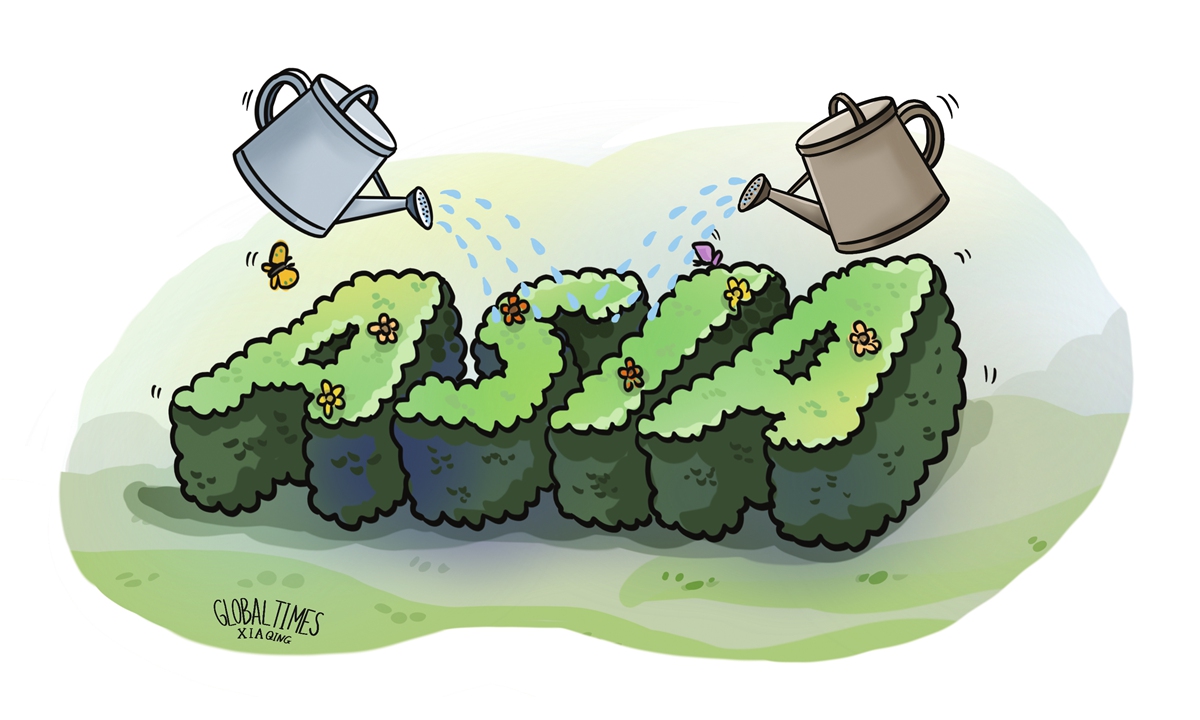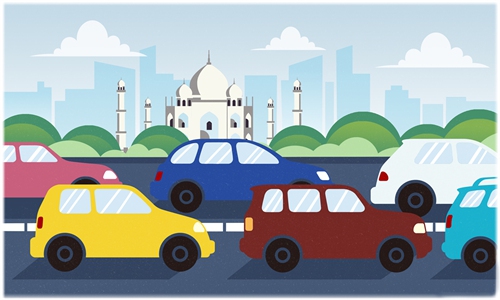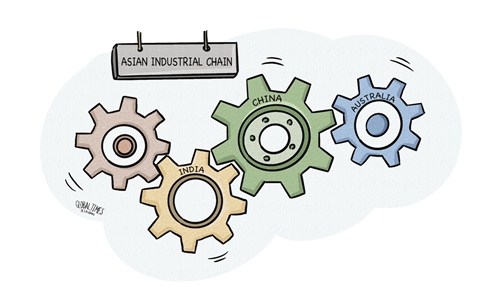
Illustration: Xia Qing/Global Times
With the Holi festival approaching, some Indian media outlets have once again hyped up the issue of China-India competition, and now the focus has shifted toward "water guns." Originally published by TNN, an article was forwarded by the Times of India with the headline "Made in India finally trumps China in the war of colors in Delhi markets."The pichkaris and the water guns are emblematic of Holi, a popular spring festival observed in India at the end of winter season. This year, the Holi festival is to be celebrated on Wednesday, as the festival is approaching, the market is filled with water guns and other Holi toys. Retailers said that in the past two decades, Chinese water guns had taken local markets only because "Indian manufacturers could not match Chinese producers," but now most water guns and other Holi toys are being made in India by local manufacturers, the TNN report said.
Frankly speaking, even if India "finally trumps" China in the water guns, it's nothing to be proud of. Rather, India should do everything it can to find out why it had to rely on the imports of water guns for the celebration of the Holi festival over the past two decades. Since the launch of the "Make in India" initiative by the Modi government in 2014, there has been a lot of discussion about how to make India a manufacturing superpower. It will be a little bit ironic if a "manufacturing superpower" is unable to be self-sufficient in the water guns.
India has some key advantages for manufacturing, such as a demographic dividend and expanding consumption. At the same time, the country also faces challenges such as weak industrial infrastructure and a high illiteracy rate that hinder development of labor-intensive manufacturing industries. Regrettably, some Indian media outlets turn a blind eye to the problems and have instead put a focus on hyping up the issue of China-India competition. It doesn't make much sense to apply politics or nationalism to the water guns.
Of course, India has indeed made some progress in its manufacturing sector in recent years, but the challenges ahead to become a major manufacturing hub should not be underestimated. If India continues to indulge in unchecked and unhealthy economic nationalism, the hope for the emerging country to become a manufacturing superpower will remain limited.
However, although nationalism has been on the rise in India, we still believe that economic and trade cooperation between the two countries has strong resilience and great potential, partly because of their high economic complementarity. The rise of "Make in India" will probably help create space for the two countries to expand their industry chain and strengthen supply chain cooperation.
Despite a surge in foreign investment into India, the nation cannot replicate the complete industrial chain built in China overnight. With an expansion in India's manufacturing activity, there will be also an increase in the demand of intermediate products. China is the largest manufacturing country with the most complete industry categories. Many local Indian manufacturers need to import a large amount of industrial chemicals and auto parts from China as intermediate products.
Although some media outlets have been keen to exaggerate the competition between China and India in the manufacturing field, official data showed the trade between the two countries reached $136 billion in 2022, up 8.4 percent year-on-year. The increase is partly attributable to strengthened supply chain between the two countries and the rise in intermediate products trade.
Both China and India play an irreplaceable part of the Asian supply chain, and their role cannot be replaced by each other. At a time of weak demand in the world market and a slowing global economy, Asian countries need to strengthen industrial chain cooperation and cope with fast evolving external risks.
From the perspective of the Asian industrial chain, China and India each have their own advantages and are highly complementary. The two need to jointly promote the reconstruction of a complete industry chain in Asia, and we should be vigilant against excessive nationalism, which would obscure cooperation.
The author is a reporter with the Global Times. bizopinion@globaltimes.com.cn



